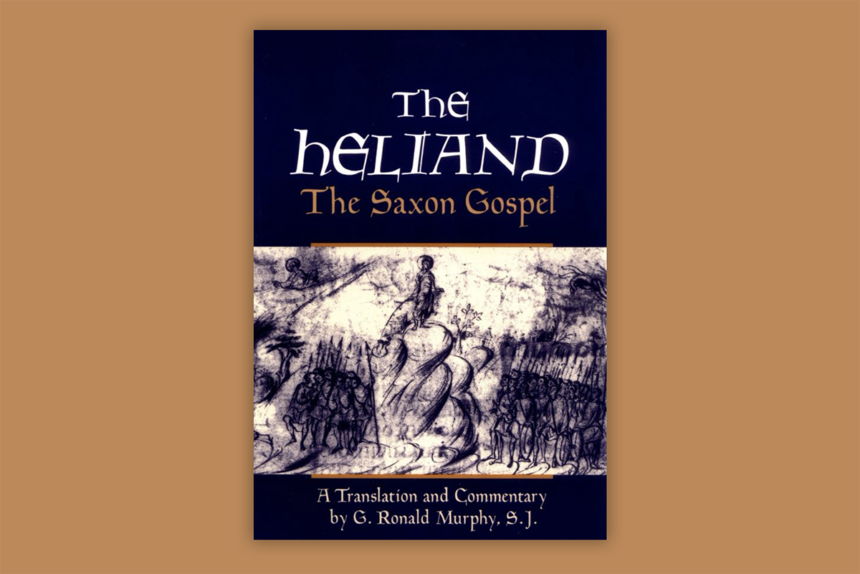Northwestern Europe’s early development owes much to the Carolingian dynasty, which led Germanic society into Christendom from the dead end of paganism. It set the stage for the lush flowering of knightly culture, with its ideals of chivalry, courtesy, and courtly love, which established the Western habit of mind.
This Western ethos is rooted in classic literary works, and chief among these is the Old Saxon epic poem The Heliand, dating from the early ninth century and likely commissioned by Louis the Pious, the son of Charlemagne. The subject matter is the life of Christ, wherein loyalty, honor, courage, faith and love are defined. Its apt title, The Heliand (“The Savior”), is not original but added by the first editor in 1830.
At nearly 6,000 lines in length, the poem survives in six manuscripts, two nearly complete, one of which dates from the 10th century. Although the author is not known, we are told that he was a well-known master-poet and monk at the famed monastery of Fulda in what is now Germany. Though it appears to have been popular in its day, The Heliand remains largely unknown in the English-speaking world because of poor translations.
The first, published in 1966 by Mariana Scott, deploys an imagined Germanic vocabulary to the point of incomprehensibility. The second, in 1992 by G. Ronald Murphy, fails for a similar reason, in that a supposed hidden pagan meaning of Old Saxon terminology is “recouped” in the translation in an attempt to demonstrate that Christianity was “Germanicized” when it came North. The result is a Heliand transformed into Murphy’s thesis of the Saxons subverting Christianity by paganizing it.
Both translations destroy the grandeur and clarity of the original. Sadly, Murphy has much influenced the poem’s reception in the English-speaking world. The Heliand still awaits its true English translator.
But why read the poem today? Two important reasons. First, as a rather moving testament of faith, which prefigures in its structural complexity the Gothic cathedrals of a later age. Such religiosity we have entirely lost, whereby personal faith is the rich ground of beauty. Second, as a classic, The Heliand embodies another lost virtue—that of holy wisdom and its necessity to life.
Both reasons are fitting antidotes to the excesses of our own age; and both are reminders that man’s purpose is not to create heaven on earth. Or, as the Heliand tells us:
Then God’s angels go forth,
The holy guardians of Heaven, and gather together
men who are pure, and bring them into eternal glory,
into the clear light of Heaven…

Leave a Reply